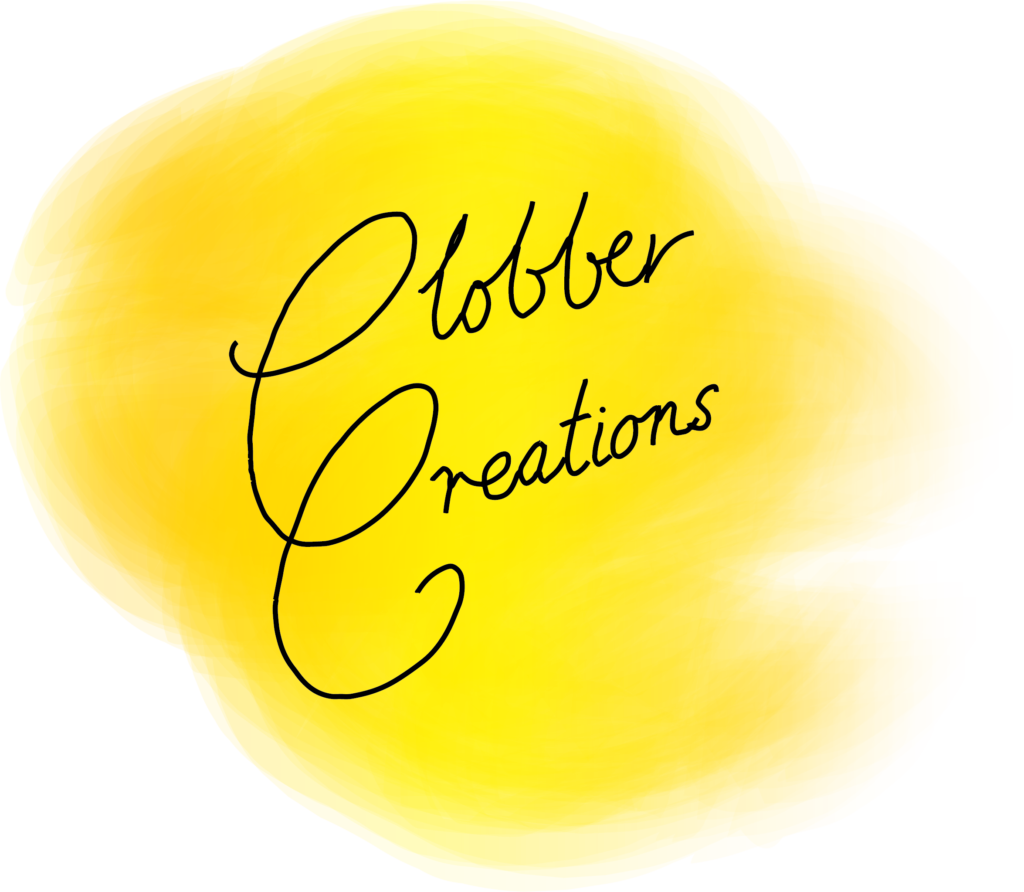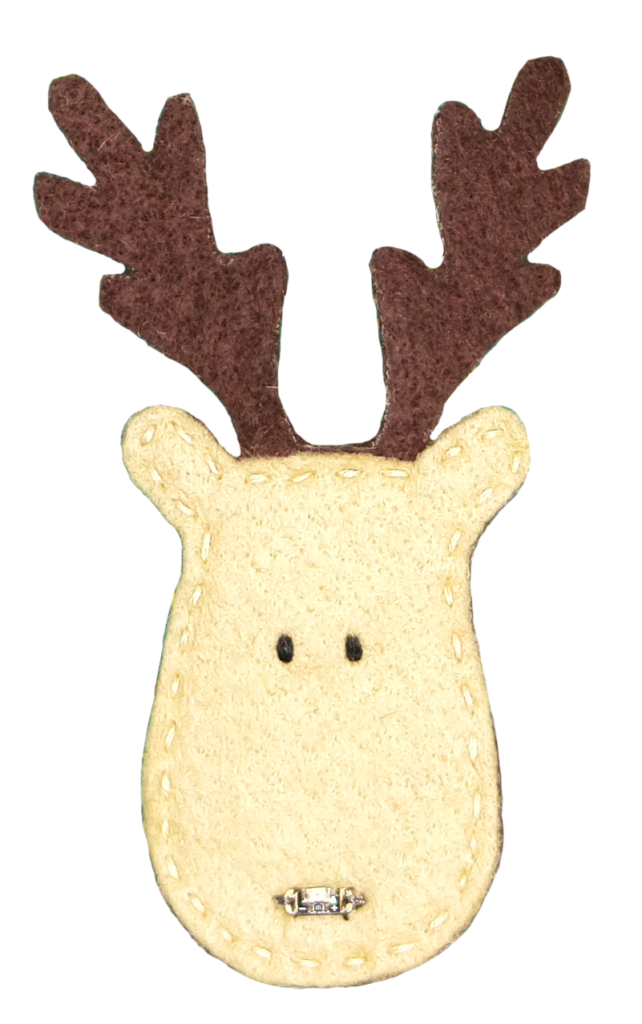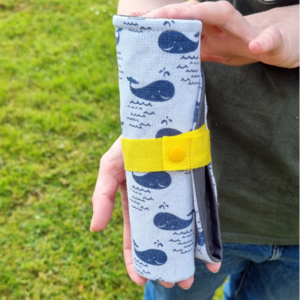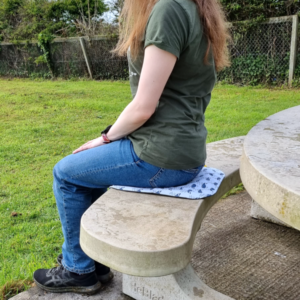Picnic Blanket Workshop
- Post author:clobbercreations
- Post published:June 7, 2023
- Post category:Stash Busting
- Post comments:0 Comments
I haven’t sewn a lot this year so far. Fortunately, I had a free sewing workshop booked locally to give me a nudge to sew again, plus use up some scraps.
Sew a Wheat Warmer
- Post author:clobbercreations
- Post published:March 19, 2023
- Post category:Sewing/Stash Busting
- Post comments:0 Comments
I had some lovely leftover fleece from making one of my niece’s a leopard print cape last Christmas, so I decided to use it to make some lavender wheat warmers for myself and others.
I find wheat warmers are really useful when you feel a bit sore or stiff and I had been using a very old shop bought one for years to manage my chronic health symptoms before getting round to making this one.
Once you have made it, all you need to do is pop it in the microwave for up to 120 seconds if less than 800 Watt, or up to 100 seconds if your microwave is 800-1000 Watt. It can help to put a small mug filled with water in the microwave at the same time to provide a bit of moisture (just in the microwave with it, not poured over it!)
Sew your own dishcloths
- Post author:clobbercreations
- Post published:March 5, 2023
- Post category:Sewing/Stash Busting/Upcycling
- Post comments:0 Comments
Recently, my mum got into making her own dishcloths to be a bit more sustainable. Also, they’re great for using up scraps of fabric you have left from other projects!
This dishcloth is simple to make. It uses a bit of hessian (burlap) for one side for when you need a more abrasive side which won’t damage any non-stick surfaces. The softer side is simply cotton, and can be made from any of your favourite remnants.
To make them as sustainable as possible, you need to use 100% natural fibre fabrics and thread. This will ensure that the dishcloth can biodegrade. Here, I have used cotton fabric as I have loads of remnants of this, but another natural fibre such as linen would work just as well.
If you’d like to make a few dishcloths, either for yourself or to gift to others, I’d recommend making a cardboard template to make it easier to cut out a batch.
DIY Laundry Mesh Bags
- Post author:clobbercreations
- Post published:November 6, 2022
- Post category:Accessories/Craft Skills/Sewing
- Post comments:0 Comments
Here is a simple way to make your own laundry bags/pouches. They are useful for providing a bit of extra protection for items in the washing machine.
Pattern Review: GBSB Simple T-Shirt
- Post author:clobbercreations
- Post published:October 1, 2022
- Post category:Sewing
- Post comments:0 Comments
Here is another top I made a while ago and had not gotten round to reviewing.
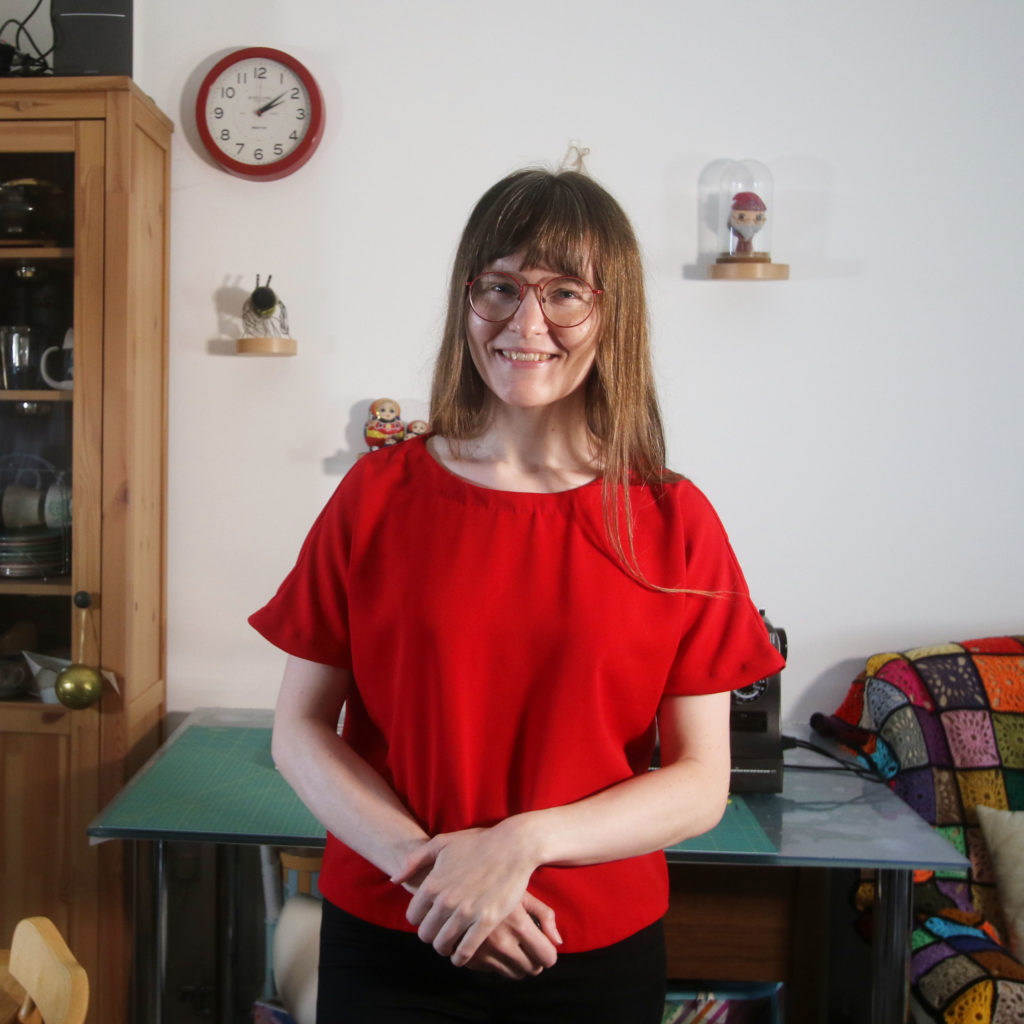
Details
- Name: Simple T-Shirt
- Variation: N/A
- Design House: Book – The Great British Sewing Bee: Sew Your Own Wardrobe
- Size I made: 14
Fabric
I used some leftover polyester crepe I had which in hindsight was not that suitable for this garment. While the crepe quality meant it drapes nicely, it meant that it was a thicker fabric than the I feel the pattern intended for it. As a result, I had issues with binding the edges using the same fabric cut on the bias.
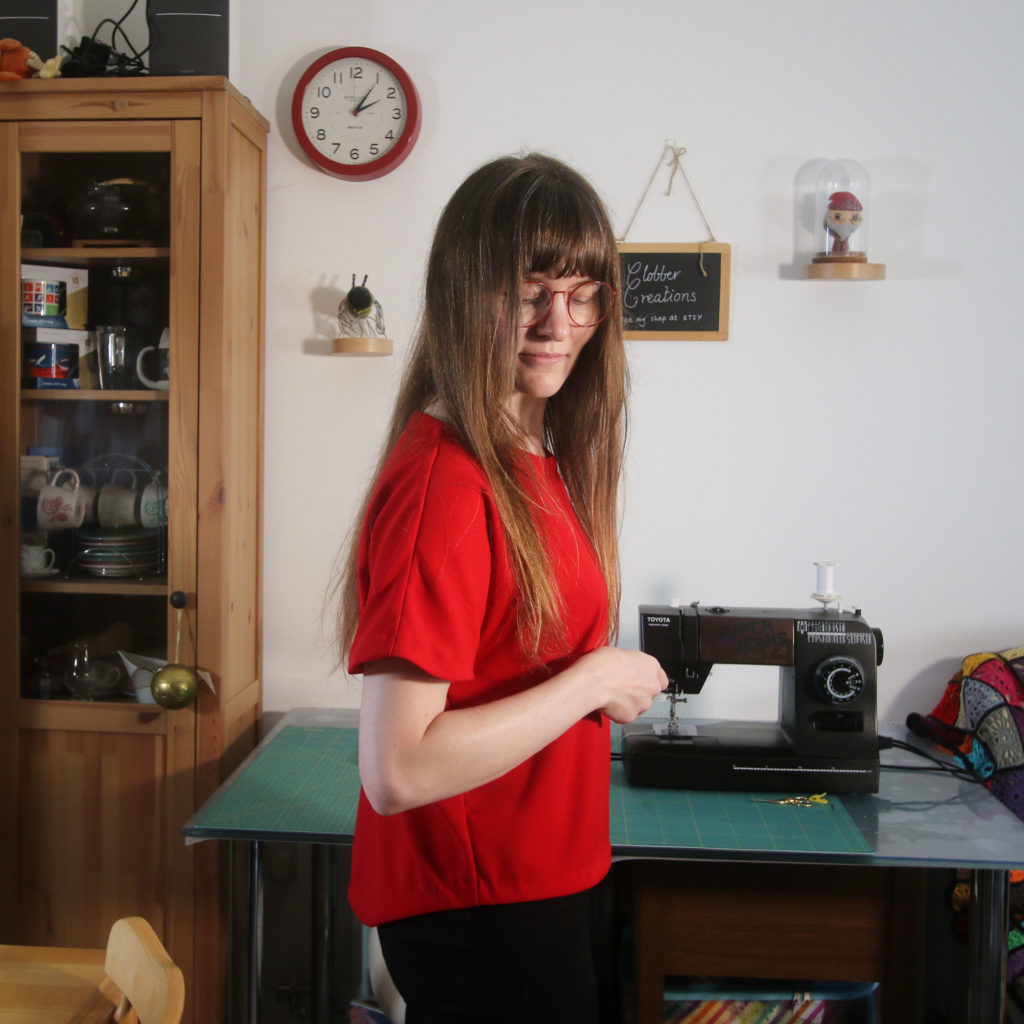
Difficulty
The hardest aspect of this garment is the fabric you must use. This top would not work with a stable woven fabric, so you must choose a more challenging fabric.
The other challenging part is binding all the edges with bias binding. If you are not familiar with binding edges with this method, it could be very difficult, and I would recommend taking your time!
Clarity
The illustrations in the book are clear and there is a masterclass section on how to make your own bias binding as will as how to apply it.
Design and Fit
I like the neckline on this top and I think the overall shape of it, with the high-low hem is nice. I find it really comfy to wear and I’m sure that if it was made in a finer fabric it would be even nicer to wear.
Time Taken
This took me a couple of days – mainly because the bias binding part went badly first time and I had to unpick and start over. A confident sewist could make this comfortably in a day.
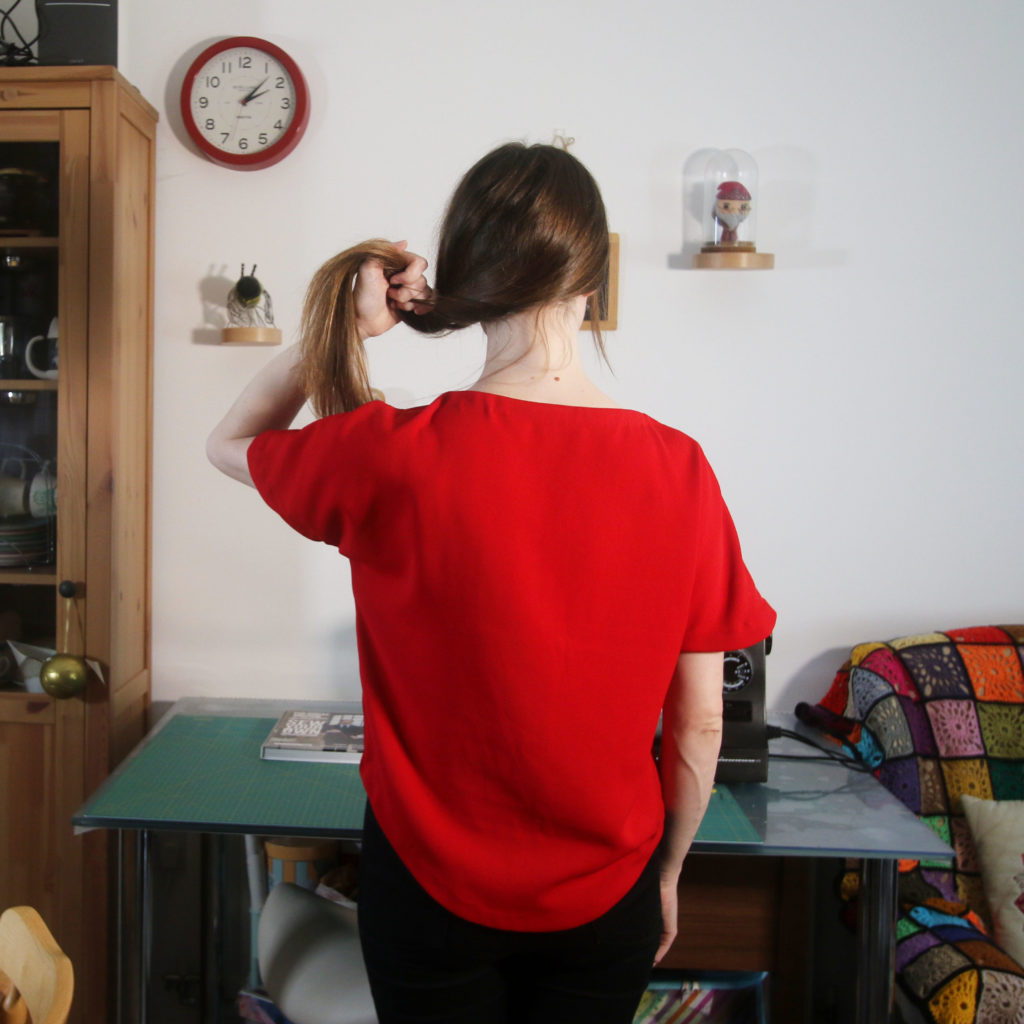
Conclusion
I would consider making this top again. The issues I had were completely related to the fabric choice and I would like to try it out using a more suited, thinner fabric.
Pattern Review: GBSB Breton Tee
- Post author:clobbercreations
- Post published:September 4, 2022
- Post category:Sewing
- Post comments:0 Comments
Hello! It’s been a while, but here is a pattern review for a top I made a while ago…
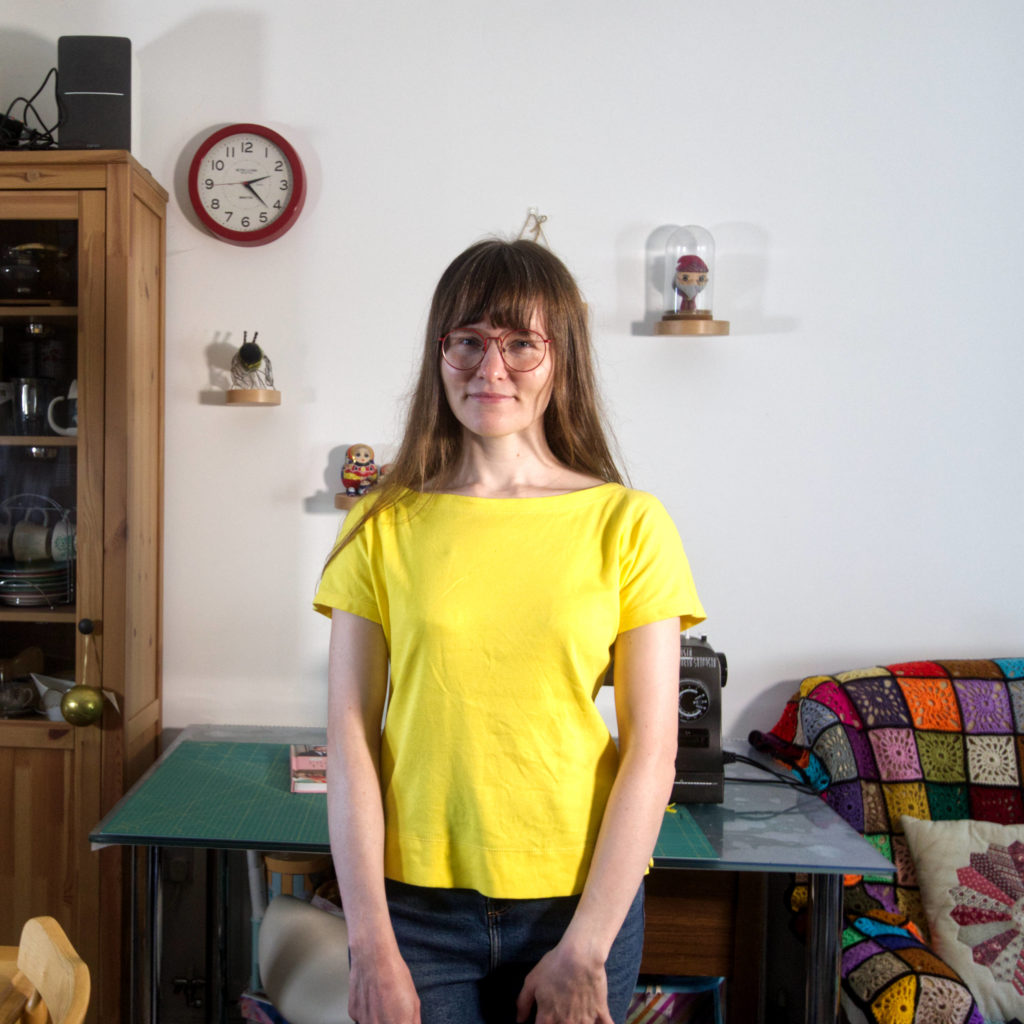
Details
- Name: Breton
- Variation: ‘Hack: Breton Tee’
- Design House: Book – The Great British Sewing Bee: From Stitch to Style
- Size I made: 12
Fabric
I used a lemony-yellow cotton knit fabric. I do not think it has any stretch and I think there is a reasonable risk that the garment will become distorted and stretch over time.
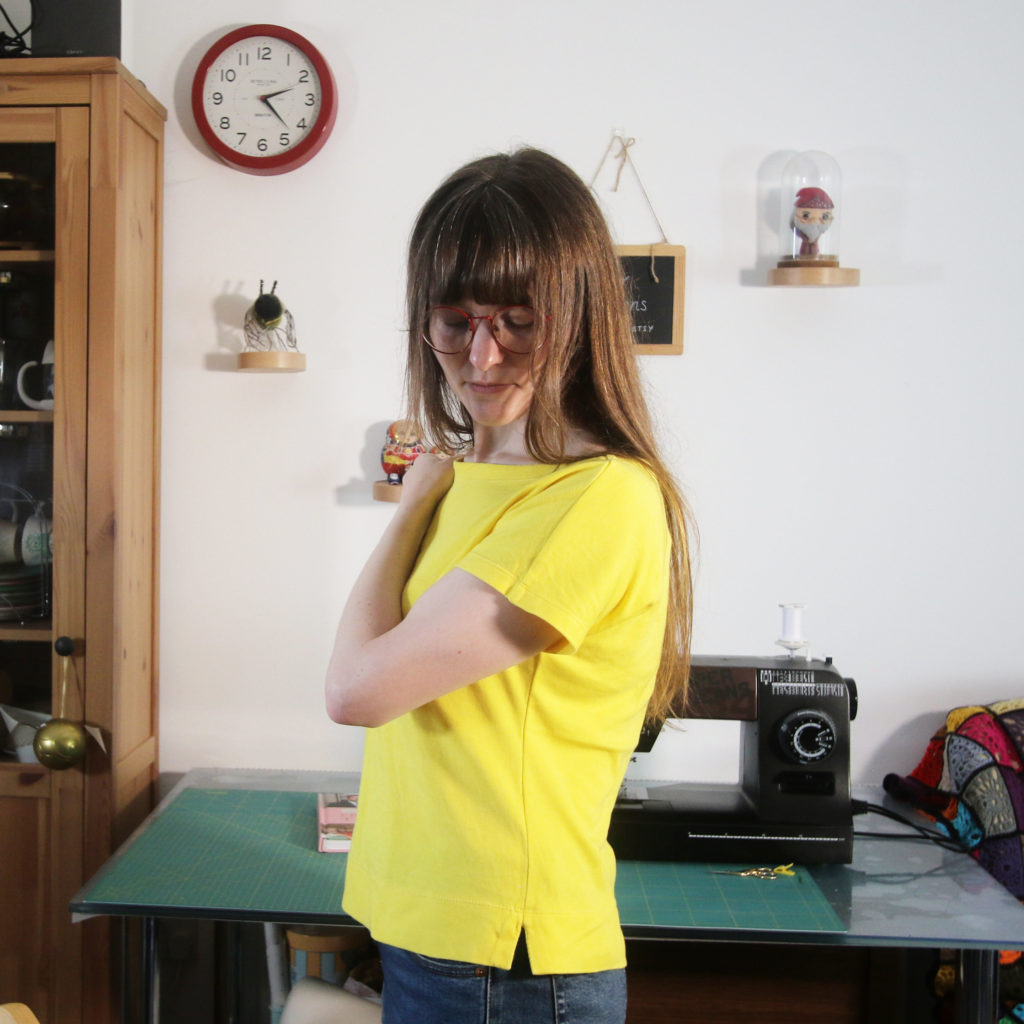
Difficulty
I would say that this pattern is straightforward to make, especially if you have tried sewing with knit fabric before. The hem is a bit different as it has side seam slits but it’s a nice new technique to learn if you haven’t tried this type of finish before.
Clarity
I found both the illustrations and written instructions clear for this make.
Design and Fit
I was drawn to the neckline and grow on sleeves but now I have made it, I’m not as much of a fan of the neckline. If I made it again, I would make the neckline not so wide. However, it is worth highlighting that it might be my fabric choice which has made the neckline feel quite so uncomfortable. As I mentioned, my fabric doesn’t appear to have any elastane in it, so it might be stretching width-ways!
Time Taken
This top can be made in a day. As the sleeves are part of the front and back pieces, there is not much to cut out.
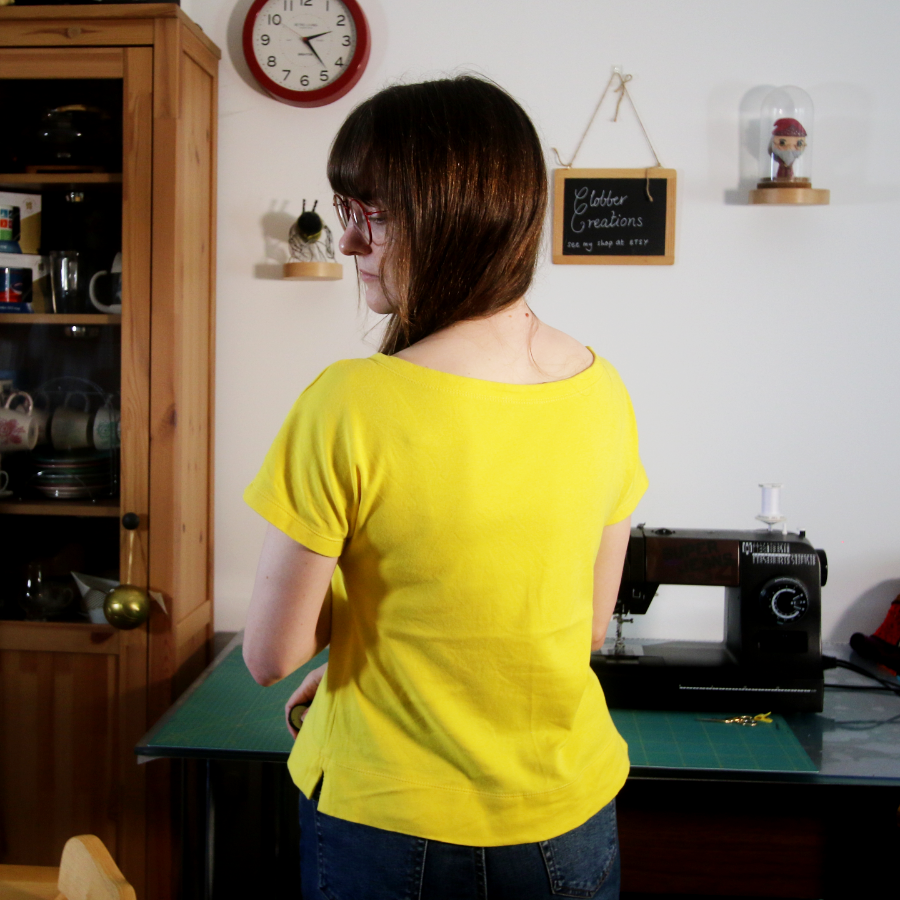
Conclusion
I’m not sure that I would make it again. If I did, I would choose a better-quality fabric and possibly adjust it a bit to fit better. For example, I could try to stabilise the neckline a bit better.
Tutorial: Waterproof Sitting Mat
- Post author:clobbercreations
- Post published:May 23, 2022
- Post category:Accessories/Sewing
- Post comments:1 Comment
Pattern Review: TATB Safiya Dungarees/Playsuit hack
- Post author:clobbercreations
- Post published:April 12, 2020
- Post category:Dressmaking
- Post comments:0 Comments
Here is my third pattern review from the Make it Simple book – this time, I have combined two variations in the book for the Safiya trousers.
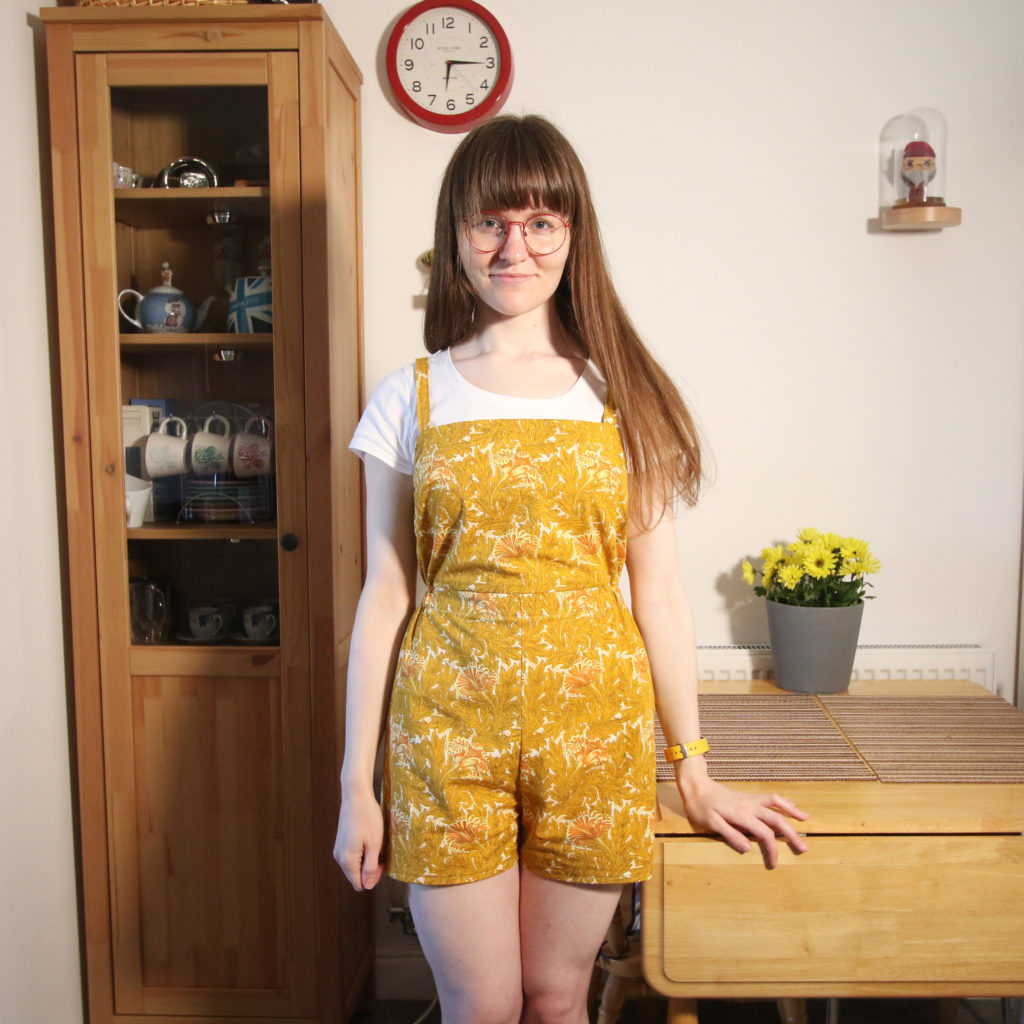
Details
- Name: Safiya
- Variation: Dungarees for bodice/straps, playsuit for shorts
- Design House: Tilly and the Buttons / Tilly Walnes’ book Make it Simple
- Size I made: 4
Fabric
I wasn’t sure how this mash up would turn out, so to be on the safe side, I found something in my stash. I ended up using an old curtain, which was easy to sew up.
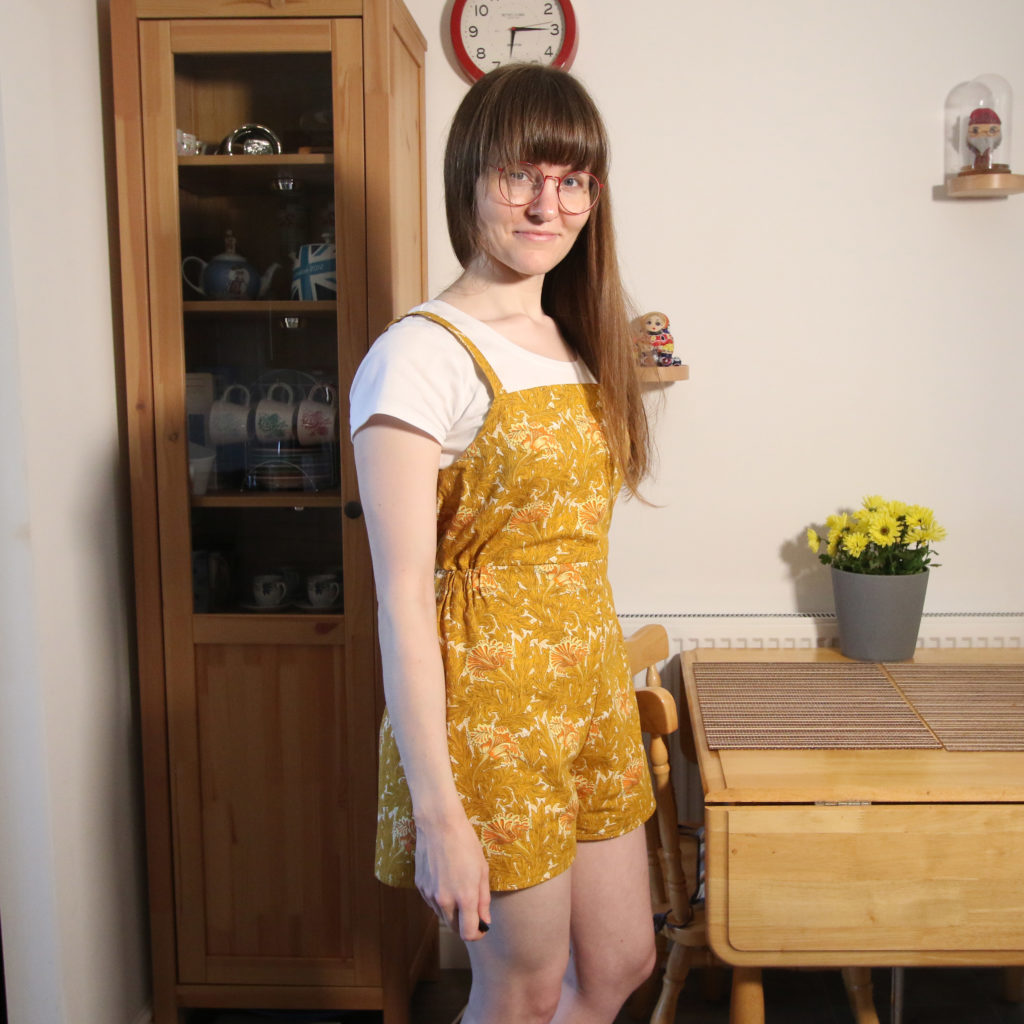
Difficulty
There are no tricky fastenings and the darts were simple to construct. My main issue was checking the fit and making sure I read the correct instructions for each part as I was using part of the playsuit instructions and part of the dungarees.
Clarity
The instructions are clear, but there is not much guidance on how to create this hack as it is just suggestion in the book. However, if you put markers in the book to ensure you follow the right section at the right time, you should be okay!
Design and Fit
I am surprised at how fitted they have ended up considering the design is loose fit. There is not much wiggle room for putting them on when they go past your hips. My measurements are fairly standard, but if you do vary quite a bit and want a fitted finish, you may need to consider adding a zip.
I was torn between adding the tie and not having elastic or just going with the elastic. As you can see, I went with the elasticated waist. I decided to go with it in part because I would have had to remove the excess length on the shorts, but also felt it would be easier to wear with the elastic.
Sadly, the shorts are too short to incorporate the in-seam pocket.
Time Taken
It’s tricky to gauge how long it took me, as I went wrong a few times and I spent about an hour or so turning out those narrow straps! I made it over a few days, but it probably equates to about two days.
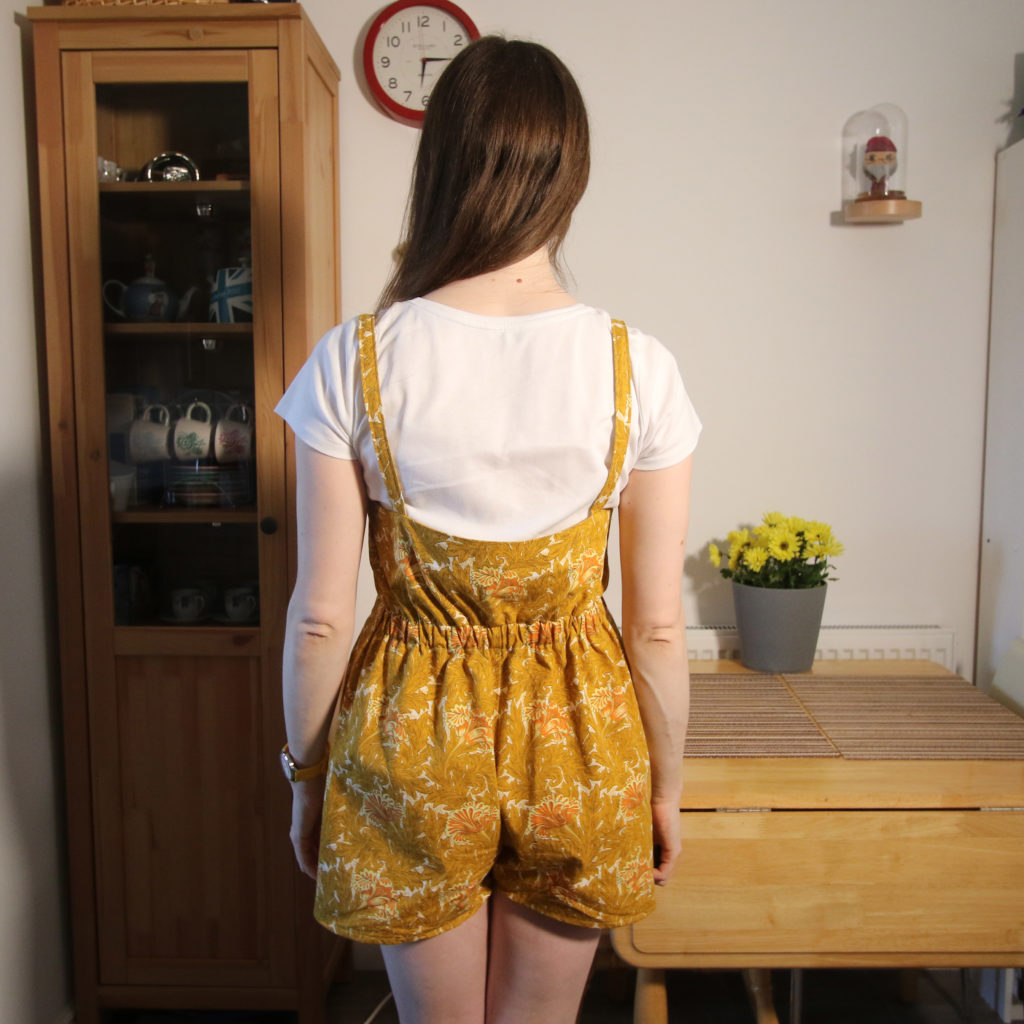
Conclusion
Making this version has made me more tempted to make a longer dungaree version of the Safiya. Living in the UK, I’m not sure how many short versions I would wear, but it’s definitely a fun addition to the wardrobe, and a good way to re-purpose an old curtain.
You can watch my related video on the vlog below:
Pattern Review: TATB Shortie PJs
- Post author:clobbercreations
- Post published:April 5, 2020
- Post category:Dressmaking
- Post comments:0 Comments
Here is my pattern review for the shortie PJs from the Make it Simple book!
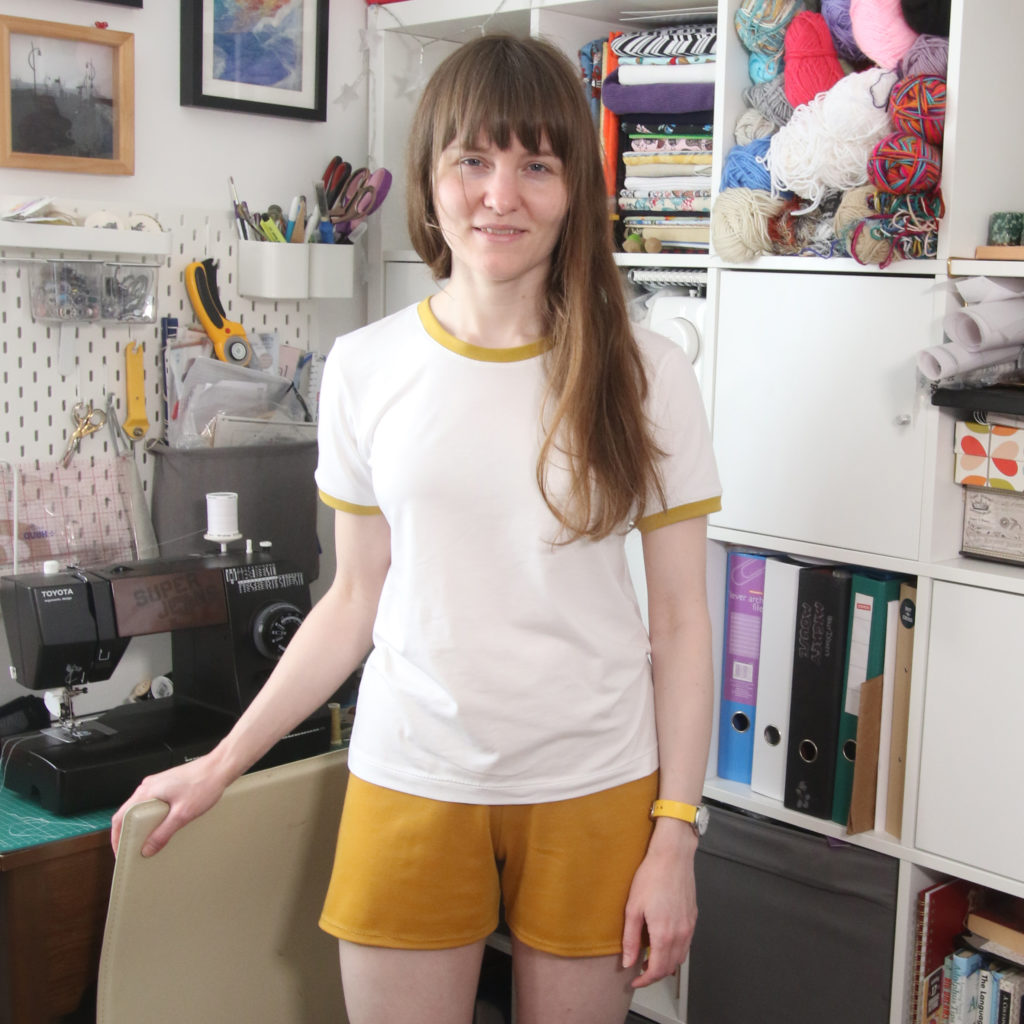
Details
- Name: Juno PJs
- Variation: Shorts and short sleeved – with cuffs from Tabitha variation
- Design House: Tilly and the Buttons / Tilly Walnes’ book Make it Simple
- Size I made: 4
Fabric
I used up some yellow ponte fabric which I originally used for my yellow Kinder cardigan for the shorts. The top was made from a nice single knit fabric I found in my local Trago shop. The yellow ribbing was from My Fabrics.

Difficulty
I found this a nice simple make overall and would recommend to confident beginners. The only bit which may be tricky is the neckband as it may need adjusting. I followed the practice I learned from another pattern where you machine tack the neckband on to begin with to check it isn’t too baggy before going for it with a smaller stitch or overlocker! It turned out I didn’t need to adjust it but it is good to be safe.
The waistband on the shorts is made in a similar fashion to the neckband. I was concerned that I might find this a bit tricky as it can be easy to stretch elastic inconsistently, but it turned out to be fine.
For the shorts, you must adjust the trouser pattern from the trouser version, but the instructions on how to do this are really clear and I found this very easy to do.
Clarity
For the shorts, I followed the longhand instructions. For the top, I followed the checklist instructions, but referred to the longhand version as required. Both sets of directions were clear.
Design and Fit
I’m happy with the fit. As it is made from a knit fabric, I didn’t worry about adjusting it. There are clear instructions on how to measure out the elastic for the waistband.
You decide how long the shorts are, so I opted for and inside leg seam of 12cm, which I think is about double the version shown. This length is just right for me; not too short and not too long.
I think the ribbed cuffs on the top are a nice addition and complements the shorts.
Time Taken
The book suggests 50 minutes to cut out and 2 hours to make. I took 1 hour 30 minutes to cut out and 3 hours to make.
I couldn’t cut my shorts on the fold as I was using a remnant, and I added the cuffs to the sleeves, which probably added a bit of time onto the total. However, I think I am just a slower sewist than those that helped create the guide times!
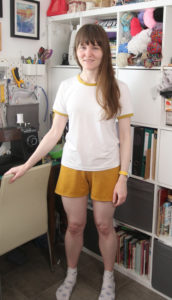
Conclusion
I’m happy with the end result and I might made the Tabitha t-shirt on its own one day as it would go under dungarees or a pinafore nicely. It is like the Peak t-shirt by Wendy Ward in that you can embellish it and adapt it to your own style. I think I will add a bit of embroidery on the top soon to give it a bit more character.
You can watch my related video below:
